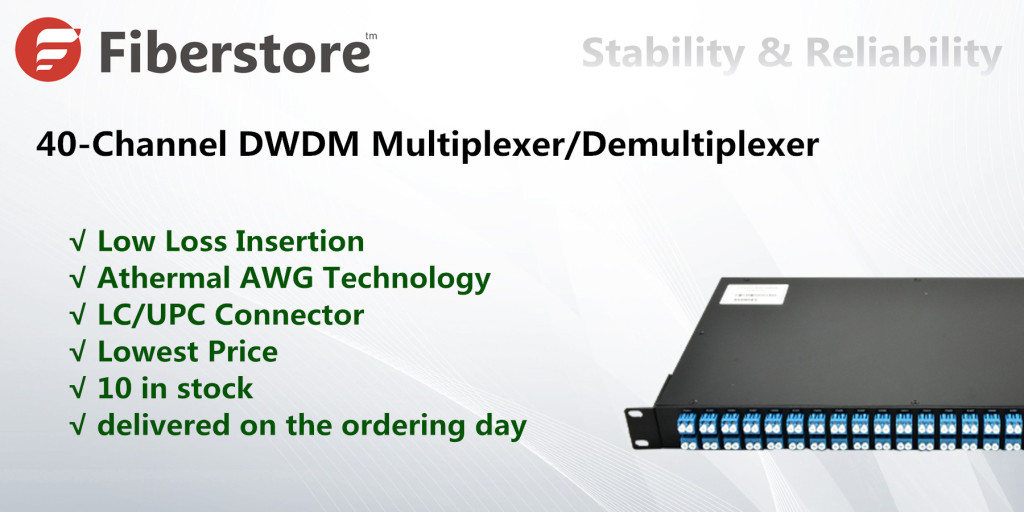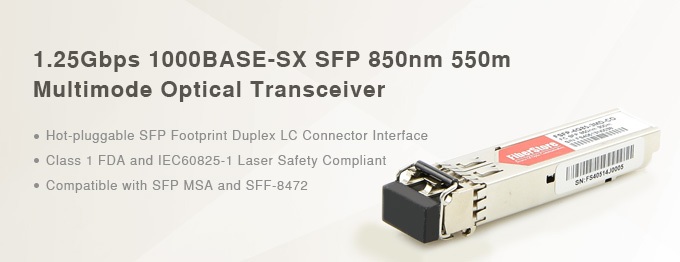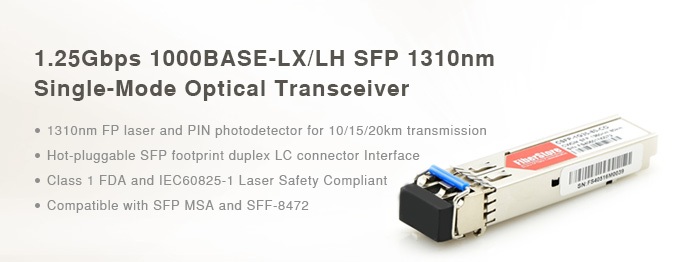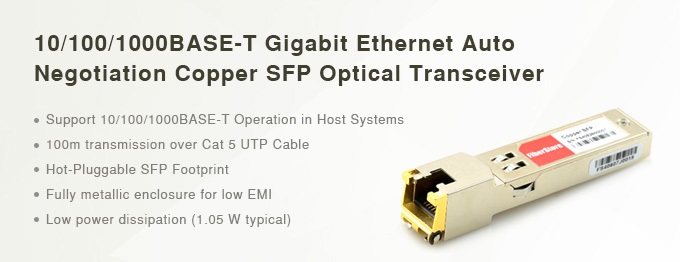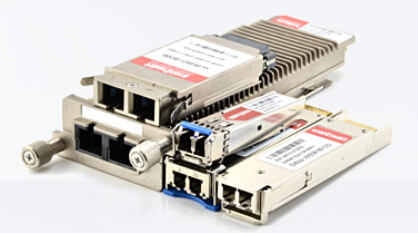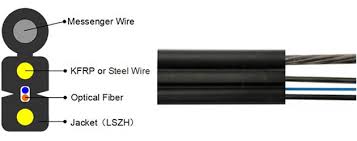Share Various Fiber Optic Telecom Network Topics, Information, News, Questions, Sources and Network Solutions.
Wednesday, June 24, 2015
FAQs You May Ask When Using 1000BASE-LX/LH SFP
Q1: Can 1000BASE-LX compatible with 100BASE-LX?
A1: 1000BASE-LX and 100BASE-FX are very different standards. 1000BASE-LX SFP (GLC-LH-SMD) and 100BASE-LX SFP (GLC-FE-100LX) are 2 module types, one for GE and one for FE slots. The GLC-LH-SMD will not operate at 100Mbps. You will need to use a 100Mb module to connect to another device at 100Mb. Check optical transceiver compatibility with your equipment by reviewing the Cisco Fast Ethernet SFP module compatibility document and choose the one it says is compatible.
Q2: What is the difference between LH and LX modules?
A2: Long Haul (LH) denotes longer distances while Long Wavelength (LX) denotes less energy which is obviously shorter distance. Before it was standardized 1000BASE-LX10 was essentially already in widespread use by many vendors as a proprietary extension called either 1000BASE-LX/LH or 1000BASE-LH.
Q3: Does 1000BASE-LX SFP work with 1000BASE-LH SFP? What does it infer if a module says like "Cisco 1000BASE-LX/LH SFP"?
A3: Yes, the 1000BASE-LX will work with the 1000BASE-LH. For instance, Cisco 1000BASE-LX/LH SFP is either made for single mode (long distance) / multimode (short distance). But this module can be used for both Single-mode and Multimode. The Cisco 1000BASE-LX/LH SFP, compatible with the IEEE 802.3z 1000BASE-LX standard, operates on standard single-mode fiber-optic link spans of up to 10 km and up to 550 m on any multimode fibers. When used over legacy multimode fiber type, the transmitter should be coupled through a mode conditioning patch cable.
Q4: What about Mode Conditioning Patch cords (MCP)?
A4: When selecting an optical transceiver, watch the transceiver’s user documentation for when a MCP should be used (see previous link for MCP information). They are sometimes required when your network’s installed optical cable is OM1 or OM2 rated multimode fiber (MMF). In short, the MCP is an optical jumper that transitions the transmit fiber from a single mode fiber (SMF) to a multimode fiber.
Q5: GLC-LH-SM SFP to 1000BASELX GBIC won't link over MMF?
A5: Cisco compatibility document says: "Some customers might be tempted to connect 1000BASE-LX/LH devices over short reaches of MMF jumper cables without MCP cables. There is a risk associated to this type of nonstandard deployment, especially when the jumper cable is an FDDI-grade or OM1 type. In such case the power coupled directly into a 62.5-micron fiber could be as high as a few dBm (typically 5 to 6 dBm), and if the jumper cable is short, the adjacent receiver will be saturated, causing high bit error rate, and eventually irreversibly damaged. We recommend the use of MCP, but if the customer remains reluctant to the deployment of MCP, a 5-dB attenuator for 1300nm should be used and plugged at the transmitter of the optical module on each side of the link."
Q6: Does GLC-LH-SMD working with GLC-LH-SM?
A6: Yes. Both the GLC-LH-SM and GLC-LH-SMD transceivers support the IEEE 802.3 1000BASE-LX/LH standard and so are compatible with each other. The difference between the two is that the GLC-LH-SMD transceiver has additional support for Digital Optical Monitoring capability.
Q7: How much bandwidth can my single mode fiber (SMF) support?
A7: Single mode fiber has an extremely large bandwidth capacity. The following diagram shows how bandwidth can be scaled on SMF. Scaling bandwidth on fiber is not inexpensive. Depending upon the network, it may be more cost effective to install additional fibers instead of adding WDM technology.
Click through to browse GLC-LH-SMD price
Reference: www.sfp-transceiver-modules.com
Warm Tips: Fiberstore offers amount of in-stock 1000BASE-LX/LH SFP which are compatible for Cisco, Juniper, Dell, Finisar, Brocade, or Netgear (AGM732F) in 10/20 Km options.
Thursday, June 18, 2015
Do Not Miss Fiberstore's 40-Channel DWDM Mux/Demux
Since the start of DWDM, various equipment and technologies have been used to enhance the high performance of every part in DWDM network. DWDM Multiplexer and demultiplexer are the main equipment that take charge of the data sources' multiplexing and demultiplexing. In the past years, DWDM multiplexers and demultiplexers have been upgraded rapidly to overcome the insertion loss and to meet the demands of the increasing requests for faster telecommunication, and they are always being combined in one rack by today's vendors also known as DWDM Mux/Demux.
Fiberstore as a serious manufacture of optical communication published a 40-channel Duplex DWDM Athermal AWG Mux/Demux with competitive features which are described as following:
- Low Insertion Loss: Insertion loss is an inevitable problem in optical networks. Combining LC/UPCconnectors of high quality and AWG technology, this duplex Mux/Demux reduces the insertion loss to a minimum of 3dB and increases the transmission capacity effectively.
- Athermal AWG Technology: With athermal design this mux/demux device is temperature-intensive and allows multiplexing and demultiplexing of DWDM signals over a wide operating temperature range with long-term stability, reliability and large transmission capacity.
- Large Channel Number & Excellent Channel Isolation: This DWDM Mux/Demux is designed for use within the C-band release of DWDM system which uses 40 channels at 100GHz spacing containing the channels from C21 (wavelength: 1560.606 nm) to C60 (wavelength: 1529.553 nm). Also 1.6nm (200 GHz) are available on request. Excellent channel isolation that eases the fiber handling is also provided.
- Space saving: With a standard 19 inch rack mount housing size, this DWDM Mux/Demux saves space effectively.
- High quality and Inexpensive: The products of Fiberstore has been appreciated by customers for its reliable quality. Comparing with other manufactures, Fiberstore offers the lowest price for such a high quality 40-channel DWDM Mux/Demux.
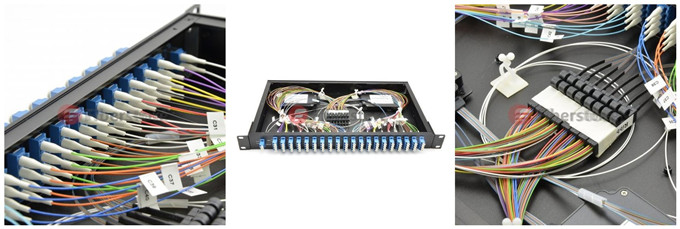
Click through to get more information about WDM fiber optic multiplexer.
Wednesday, June 17, 2015
1.25G SFP Transceiver Alternative Solution
| Module # | Data Rate | Transmission Distance | Connector Type | Price | Inventory |
| 1000BASE-SX SFP Transceiver | ≤ 1.25 Gbps | 550 m | LC | US$ 8.00 | 2000 |
| 1000BASE-LX/LH SFP 1310 nm Transceiver | ≤ 1.25 Gbps | 10/15/20 km | LC | US$ 10.00 | 5500 |
| 10/100/1000BASE-T SFP Transceiver | 10/100/1000 Mbps | 100 m | RJ45 | US$ 18.00 | 1000 |
Sunday, June 14, 2015
Great Compatible Cisco 10G SFP+ Modules
SFP+ is the Most Popular 10G Transceiver Module
Common 10GbE Standards for SFP+
| Cisco compatible SFP+ | Cable Type | Wavelength | Max Range |
|---|---|---|---|
| 10GBASE-SR SFP | MMF | 850nm | OM3:300m/OM4:400m |
| 10GBASE-LR SFP | SMF | 1310nm | 10km |
| 10GBASE-LRM SFP | MMF | 1310nm | 220m |
| 10GBASE-ER SFP | SMF | 1550nm | 40km |
| 10GBASE-ZR SFP | SMF | 1550nm | 80km |
Two Kinds of Compatible Cisco SFP+ Transceivers from Fiberstore
-
SFP-10G85-3M-CO
The SFP-10G85-3M-CO series multi-mode transceiver is a SFP+ module for duplex optical data communications such as 10GBASE-SR and 10GBASE-SW. This transceiver offers the same function with Cisco 10G SR SFP and is fully compatible with Cisco devices. It is a hot-swappable input/output device, which means no need to power down if installing or replacing. Its transmission distance can up to 300m with duplex LC multi-mode Fiber cable.
-
SFP-10G31-10-CO
The SFP-10G31-10-CO single mode transceiver is a small form factor pluggable module for serial optical data communications such as IEEE 802.3ae 10GBASE-LR/LW. This 10GBASE-LR SFP module offers the same function with Cisco SFP-10G-LR and is fully compatible with Cisco devices. This module is designed for single mode fiber and operates at a nominal wavelength of 1310 nm. Its transmission distance can up to 10km with duplex LC single-mode fiber.
Monday, June 8, 2015
What You Need to Know When Using 10G over CWDM
Bandwidth Exts are Easier
In past years, designers who want to increase or improve their bandwidth could achieve this easily over a single or duplex mode fiber. During this period, the 1G Ethernet and CWDM solutions were sufficient, and the only limiting element was the power budget of the optical transceiver or the attenuation of your fiber. That it was possible to transmit up to 200 kilometers and utilize just a 1G Ethernet when designers preferred cheap CWDM.
Now, many people are considering the 10G Ethernet solutions, and that's why it's necessary to understand how everything will differ when using 10G over CWDM. When intending to migrate to 10G, you need to know the fiber type. For the dispersion and attenuation calculation, every designer need to know the recommended parameters from ITU-T and understanding the vendor and product kind of the fiber could also help. Remember that the physical fiber will work better than the standards claim most of the time.
Chromatic dispersion is referred to as the time variance of a single pulse of a signal. To summarize, chromatic dispersion is "the spreading of a light pulse per unit source spectrum width in an optical fibre due to the various group velocities of the different wavelengths composing the source spectrum" or in layman's terms, "the signal is stretched on the fiber transmission path due the dispersion characteristics of the transporting fiber."
Chromatic dispersion always exists, but the higher the link speed is, the greater important it becomes. For instance, a wavelength of 1310nm have a 0 ps/nm chromatic dispersion and 5, 25 dB fiber attenuation. In comparison, a wavelength of 1610 nm have a 330 ps/nm chromatic dispersion and a 3,45 dB fiber attenuation.
CWDM Over DWDM 10G is Cost-Effective
Designers should bear it in mind that CWDM implementation is more cost effective than passive DWDM infrastructure. These solutions will be more expensive because DWDM lasers cost more. DWDM lasers are essentially DFB lasers which are cooled, however, they are recommended as they contain the longevity that are required in these solutions. If you would like transmit a signal over a large distance, you should think about large metro ring topologies.
Though 10GBASE DWDM is more expensive, it's become the first choice because users have started to consider the costs after dividing it over the quantity of customers served. Some customers are more cost-conscious and have lower bandwidth capacity requirements; so, the cheap CWDM infrastructure will make more sense.
Remember that the new 10GBASE DWDM services is usually added over the same fiber. This will enhance the support of the initial CWDM infrastructure capacity by 4 times. This is irresistible to many designers.
Select A Reputable Brand
Selecting a reputable brand for your CWDM Solution is necessary to achieve the best results. When you select a reputable brand, which means that multiple customers have had a favorable experience with this brand, this means that you’re likely to have success with the brand also. Compatible CWDM SFP, CWDM optical multiplexer and add drop CWDM all of these device you can but these form Fiberstore.Inc, which offer warranties and other benefits, also have an option for longer service and support.
Wednesday, June 3, 2015
How to Use DOM in Cisco System
Do you know that there is a fiber tester inside your optical transceiver? This "fiber tester" we call it DOM, which is short for Digital Optical Monitoring. DOM is a feature which enables the monitoring of some interesting status values on the interface with the most useful values being the optical receive and transmit powers. You can configure your Cisco (or other brand) device to monitor optical transceivers in the system, either globally or by specified port(s). When this feature is enabled, the system will monitor the temperature and signal power levels for the optical transceivers in the specified port(s). CONSOLE messages and SYSLOG messages are sent when optical operating conditions fall below or rise above the optical transceiver manufacturer’s recommended thresholds. By being able to monitor transmit and receive power levels of optical interfaces you are able to characterize the fiber loss and isolate any unidirectional connectivity issues. So, how to use DOM for your optical transceiver in Cisco system is our main topic today.
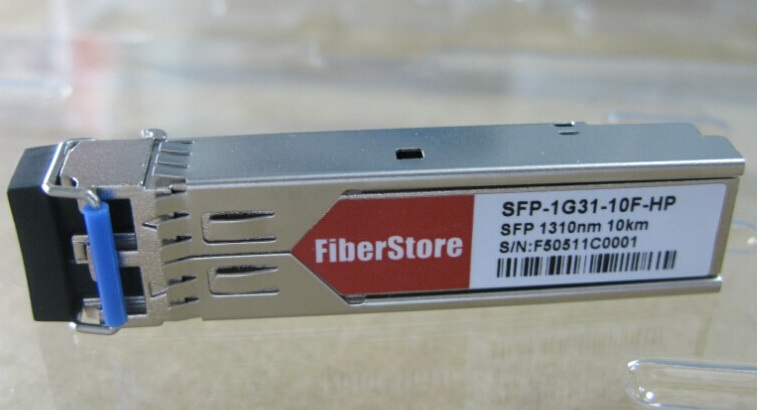
DOM allows to monitor some parameters so that network administrators can then check and ensure that the module is functioning correctly. These real-time operating parameters include:
- Optical Tx power
- Optcal Rx power
- Laser bias current
- Temparature
- Transceiver supply voltage
- Ensure that your optical transceiver supports DOM. For Cisco original optical transceivers, you need the transceiver module compatibility information for configuring transceiver monitoring.
- In case of combo ports with SFP and RJ45 provision, when SFP is inserted in slot or port and media type is not configured to SFP, DOM is functional only if global transceiver monitoring is enabled.
- CISCO-ENTITY-SENSOR-MIB traps are sent only once after the threshold violation. However, SYSLOG traps are sent according to the monitoring interval.
| Command or Action | Purpose | |
| Step 1 | enableExample: Router> enable | Enables the privileged EXEC mode.• Enter your password if prompted. |
| Step 2 | configure terminalExample: Router# configure terminal | Enters the global configuration mode. |
| Step 3 | transceiver type allExample: Router(config)# transceiver type all | Enters the transceiver type configuration mode. |
| Step 4 | monitoringExample: Router(config-xcvr-type)# monitoring | Enables monitoring of all optical transceivers. |
| Step 5 | monitoring intervalExample: Router(config-xcvr-type)# monitoring interval 500 | (Optional) Specifies the time interval for monitoring optical transceivers. Valid range is 300 to 3600 seconds, and the default value is 600 seconds. |
In conclusion, there are three main command that can be used to turn on/off DOM for all transceivers type in the system:
- Router(config)#transceiver type all
- Router(config-xcvr-type)#monitoring
- Router(config-xcvr-type)#end
Once enabled, DOM can be accessed via CLI using "show interface transceiver command", shown as the following picture:

DOM is incredibly handy when troubleshooting fiber issues. A low value in the Rx Power column indicates that you have a bad fiber, or more commonly, a dirty fiber optic patch cable somewhere.
Of all the five values, two mostly used and relevant values are TX and RX power, and temperature is also used sometimes. The operating range of these three values is unique across all modules and is available in the data sheet. Additionally, there is an extension available for this command, which is also very helpful and is used to check threshold values of the above parameters like temperature, Tx and Rx. The command is "show interface gig x/y transceiver detail".
Though DOM is a very helpful functionality of optical transceiver, not all transceivers support DOM in Cisco's optical transceiver products family. For example, the common SFPs, such as the GLC-LX or GLC-SX units that are used by most network engineers on a day to day basis are not with DOM feature.
Why not add this helpful and convenient feature to all transceivers? Actually, Cisco have their own attitude. They think that DOM functionality is worth an extra $300 a pop, putting the cost of a DOM-enabled single mode SFP close to $800. However, DOM functionality is not a novel thing now. Surprisingly, there are some third-party optical transceiver include the DOM functionality but with a low cost. Fiberstore, for instance, as the professional optical transceiver manufacturer and supplier, they can offer Cisco compatible SFP transceivers with DDM or DOM functionality with a low cost. For example, GLC-LX-SM-RGD offered by Fiberstore just at $18.00, GLC-SX-MMD and GLC-LH-SMD at $10.00. But if we want to use non-Cisco transceivers, we need a little different approach to get started with DOM of non-Cisco transceivers. To enable support for non-Cisco SFPs, command "Router(config)#service unsupported-transceiver" is necessary.
Originally published at www.fiber-optic-transceiver-module.com.
Monday, May 25, 2015
Different Types of Optical Transceivers
There are many different kinds of transceivers available that can be used in telecommunications applications. The different specs and designs are widely used to meet the changing needs of designers. There are some primary kinds of transceivers available for this particular purpose.
SFP
Small form-factor (SFP) transceiver is available for designers to use in various applications. These transceivers come in various transmitter and receiver types. Users can select the right SFP transceiver by reviewing several different categories. Some common categories include:
- 1000BASE-T SFP Copper transceiver module operates on standard Category 5 unshielded twisted-pair copper cabling of link lengths up to 100 m (328 ft).
- 1000BASE-SX SFP operates on legacy 50 μm MMF links up to 550 m and on 62.5 μm Fiber Distributed Data Interface (FDDI)-grade MMF up to 220 m.
- 1000BASE-LX/LH SFP operates on standard SMF optic link lengths up to 10km and up to 550 m on any MMF.
- 1000BASE-EX SFP operates on standard SMF optic link lengths up to 40km.
- 1000BASE-ZX SFP operates on standard SMF optic link lengths up to approximately 70km.
- 1000BASE-BX SFP operates on a single strand of standard SMF lengths up to 10km.
The SFP was one of the most popular types of transceivers until the enhanced version SFP+ was introduced.
SFP Plus (SFP+)
The small form-factor pluggable (SFP+) transceiver is an enhanced version of an SFP and is designed to support data rates up to 10 Gbit/s. Additionally, SFP+ supports 8 Gbit/s fiber channel. SFP+ sockets can be found in Ethernet switches and also network interface cards.
They've the capability to connect to various kinds of optical fiber and are highly flexible. That's why they are so desirable to designers.
SFP+ transceivers are specified by a multi-source agreement (MSA) between competing manufacturers. SFP+ was designed to have greater port density.
XFP
XFP transceivers are designed to be hot-swappable and protocol-independent. These devices can operating at wavelengths of 850nm, 1310nm, and 1550nm. These devices are capable of operating at a single wavelength or through the use of "dense wavelength-division multiplexing techniques."
This particular XFP transceiver was specified by a XFP multi-source agreement Group. Designers prefer using XFP packaging because it has a smaller footprint than other devices. It is smaller than XENPAK and can help the space-conscious designer.
XENPAK
XENPAK became the new standard transceiver with increased support across longer distances and for multiple wavelengths. Unlike GBIC transceivers that sent information across either copper or fiber optic channels, XENPAKs included support for both networks, creating a better, more flexible module. And unlike the bigger GBIC transceivers, XENPAKs were capable of conveying data across short and long distances due to their configuration settings located inside the devices. When utilizing a single-mode configuration, networks create a single ray of light to send data across a long distance, while they use a multimode setup to transmit information across short distances. Both single and multimode fiber optics were utilized by networks, creating the XENPAK device ideal.
X2
X2 Transceiver and XPAK that the older XENPAK modules could no longer keep up with, were made when the 10 Gigabit Ethernet standard took hold. The smaller, more flexible X2 and XPAK standards allowed for even more support for different Ethernet standards and were capable of transmitting data across longer distances.
CFP
The C form-factor pluggable (CFP) is a MSA to produce a common form-factor for the transmission of high-speed digital signals. The c stands for the Latin letter C used to express the number 100 (centum), since the standard was primarily developed for 100 Gigabit Ethernet systems.
There are a variety of transceiver types available, but the most popular ones include: SR, LR, ER, and ZR. SR is 850nm and link lengths up to 300m, LR is 1310nm and link lengths up to 10km. ER is characterized by 1550nm and link lengths up to 40km. ZR can transmit distances up to 80km.
Select the Right Transceiver for Your Design
Always select the right transceiver for your design. If the design is optimized, everything will fall into place for the end user. Try finding the right transceiver for your design. If you would like to find out more about the different transceivers available, you need to ask an expert and study more information about the highly functional devices online. The reliability of your design will improve, and your end-user will reap the benefits of a system that will stand the test of time and also the rigors of a stressful environment. Ask an expert to clarify your choices if transceivers are recommended for your design.
Tuesday, May 19, 2015
Choose and Purchase SFP+ Modules Effectively
 When you choosing SFP+ transceivers and cables, what you should have in mind is that the standards established by the IEEE 802.3 committee. According to the standards, the 10 Gigabit Ethernet has been approved and is compatible with multimode fiber and single-mode fiber tansceivers. This means that the signals transmit fast and are able to maintain their signal integrity when transmitting long distances. The SFP+ transceivers and cables can be powered down and changed without a complete system redesign. The following tips are basically ways that you and the designer, can make a good choice for you when purchasing SFP+ transceivers and cables.
When you choosing SFP+ transceivers and cables, what you should have in mind is that the standards established by the IEEE 802.3 committee. According to the standards, the 10 Gigabit Ethernet has been approved and is compatible with multimode fiber and single-mode fiber tansceivers. This means that the signals transmit fast and are able to maintain their signal integrity when transmitting long distances. The SFP+ transceivers and cables can be powered down and changed without a complete system redesign. The following tips are basically ways that you and the designer, can make a good choice for you when purchasing SFP+ transceivers and cables.
- 10G SR SFP+ JD092B HP compatible 10GBASE-SR SFP+ 850nm 300m
- 10G-SFPP-SR Brocade compatible 10GBASE-SR SFP+ 850nm 300m
- 10GBASE-SR SFP Fiberstore 10GBASE-SR SFP+ 850nm 300m Multi-Mode Fiber
- 10G SR SFP+ 850nm Cisco SFP-10G-SR Compatible 10GBASE-SR SFP+ 850nm 300m
- FTLX1471D3BCL Finisar compatible 10GBASE-LR SFP+ 1310nm 10km
- FTLX8571D3BCL Finisar compatible 10GBASE-SR SFP+ 850nm 300m
Wednesday, April 29, 2015
How to Choose the Right Network Face Plates
- Face plate with one or more RJ45 port(s) and one or more TV port(s)
- Face plate with a RJ45 port, RJ11 port and a TV port
- Face plate with a RJ45 port, a RJ11 port, as well as an electrical socket and switch

Tuesday, April 28, 2015
Knowledge of 1G 10G Dual-Rate Optical Transceiver
As data centers and enterprises strive to future proof their infrastructures while maximizing their current networks, the flexibility of true dual-rate compliant interfaces eases the transition to higher Gigabit Ethernet systems. This is why the dual-rate optical transceiver has emerged (e.g. Finisar FTLX8571D3BCV and FTLX1471D3BCV). And today, I'd like to talk something about the dual-rate optical transceiver, particularly the 1G/10G dual-rate SFP+.
The following figure shows Finisar FTLX8571D3BCV compatible 1G/10G Dual-Rate SFP+ optical transceiver
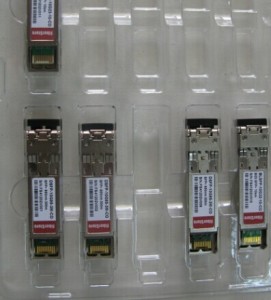
As its name suggests, dual-rate optical transceiver is a kind of optical transceiver which can support two different data rates. With the dual-rate optical transceiver, users can achieve the full forward and backward compatibility of their systems with a low cost. The common dual-rate optical transceivers in the today's market is the 1G/10G dual-rate SFP+ transceiver. They are compatible with either 10 Gigabit Ethernet or 1 Gigabit Ethernet fiber interface. There are many different vendors to supply the 1G/10G dual-rate SFP+, but the standards and protocols which they complied with are the same. In general, the 1G/10G dual-rate SFP+ are designed for use in 1 Gigabit and 10 Gigabit Ethernet links over single-mode or multi-mode fiber. They are compliant with SFF-8431, IEEE 802.3-2005 10GBASE-SR/SW, 10GBASE-LR and 1000BASE-SX, 1000BASE-LX. In addition, similar to most modern optical transceivers, digital diagnostics monitoring (DDM) or digital optical monitoring (DOM) functions are also available in the dual-rate SFP+, so that users can monitor many parameters of the transceiver module in real-time. Actually, with the development of technology and the increasing demands on higher Gigabit Ethernet, there are other dual-rate optical transceivers with different package styles or even at different data rates except the 1G/10G dual-rate SFP+, eg. Multi-rate XFP.
In my opinions, the emergence of dual-rate optical transceiver is mostly because of the cost consideration. From 1G to 10G, 10G to 40G, 40G to 100G, and even higher data rate, it means that the development of Gigabit Ethernet is very fast. In other words, the cost of updating the equipment keeps adding up over time. Dual-rate optical transceiver is a cost-effective solution to solve this question. For example, a 1G/10G dual-rate SFP+ can be used in both 1 Gigabit Ethernet and 10 Gigabit Ethernet links which eases the transition from 1Gb/s to 10Gb/s systems. Users can configure to operate the dual-rate optical transceivers at 1GbE or 10GbE in a switch with 10G SFP+ ports and 1G/10GSFP+ ports, but not native 1G SFP ports. And do not have to spend extra cost in buying optical transceivers only support 1G or 10G Ethernet. Of course, if you only need one type of Gigabit Ethernet, you do not need to use the dual-rate optical transceiver. So, at this time, the more cost-effective choice is to buy a corresponding single-rate optical transceiver. Nowadays, 10G Ethernet is the most commonly used type of Ethernet as the 40G and 100G are still developing. Thus, the market of 1G/10G dual-rate SFP+ is not so popular as its first emergence. But it is still applied in 1000BASE-SX 1G Ethernet, 1000BASE-LX 1G Ethernet, 10GBASE-SR/SW 10G Ethernet and 10GBASE-LR 10G Ethernet as a cost-effective solution for 1G/10G Ethernet.
From this paper, you may have an understanding of the dual-rate optical transceiver. No matter you are very familiar with the dual-rate optical transceiver or have no idea of it, I really hope that this paper is useful for you. Of course due to the limited knowledge of me, there may be some inevitable errors and omissions existing in this paper. If it is not appropriate, your critical comments are highly appreciated.
Read more articles about optical transceiver, go to click: Fiber Transceiver Solution blog
Thursday, April 23, 2015
Aerial Fiber Cables Tutorial
Aerial fiber optic cables are an essential part of the optical communication networks. They are commonly used in our daily life, like hanging in the pole at the front of our house. How much do you know about the aerial fiber cables? This article can help you learn more about them.
As the aerial fiber optic cables are exposed in the outdoor environment, they have to be made of material which is different to the conventional fiber optic cables to withstand windy, rainy, icy and snowy weathers. What's more, the installation method is different from other cables. Therefore, there are different types of aerial fiber cables.
By installation methods, aerial fiber optic cables can be generally classified as two types: catenary wire and self-supporting. Catenary Wire Aerial Cable is regular outdoor loose tube cables that can utilize the existing overhead pole line to install that saves more in construction costs and shortens the construction period. Self-Supporting Aerial Cable, or All-Dielectric Self-Supporting (ADSS) cable, has cable bonded to an insulated steel or all-dielectric messenger for support. ADSS cables are usually made of heavier jackets and stronger metal or aramid strength members. Nowadays, the self-supporting aerial fiber optic cables are more widely used by people. And the most commonly used ADSS cables are figure-8 aerial cable.

Figure-8 aerial cable greatly simplifies the task of placing fiber optic cable on an aerial plant. It incorporates both a steel messenger and the core of a standard optical fiber cable into a single jacket of "Figure-8" cross-section. The combination of strand and optical fiber into a single cable allows rapid one-step installation and results in a more durable aerial plant. Figure 8 cable is commonly used between the poles in the outdoor.

Figure-8 Aerial Cable
There is also another type of fiber optic cable, the intersecting face of which showing the figure of 8, that is fiber optic drop cable. You should not confound them together.
With the emergence of access networks, including fiber to the business, fiber to the home and fiber to the premises, referred to collectively as FTTx, the demands of new optimized products to meet increasing bandwidth needs are daily increased. One such product is optical drop cable. The conventional drop cable consists of two parallel reinforced core and an optical fiber in the middle of them. The intersecting surface present the figure of 8. Fiber drop cable is widely used in the FTTH networks.
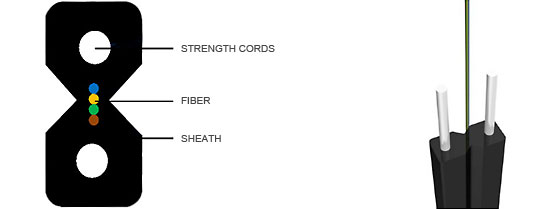
FTTH Indoor Drop Cable
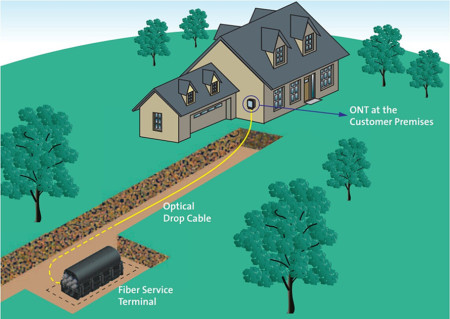
Add a thick steel wire line to the conventional drop cable, the self-supporting drop cable is formed. Self- supporting drop cable has a stronger tensile strength because of its metal hanging units. Therefore, we can also call it aerial drop cable. The aerial drop cable is designed to run from the distribution point to the subscriber. The metal unit will be clipped before entering to the subscriber. The biggest problem for aerial drop cable is that it's more expensive than conventional drop cables.
FTTH Aerial Drop Cable
Marketing: Fiberstore supplies figure 8 areial cables, FTTH Indoor Cable, FTTH Drop Cable, FTTH Duct Armored Cable, etc. In order to cut inventory costs and speed up the installation process for our customers, Fiberstore's FTTH cable designs can simplify your project.
Article Source: How Much do you Know about Aerial Fiber Optic Cables?
Tuesday, April 21, 2015
The Introduction of EXFO OTDR
Monday, April 20, 2015
D-Link 1000BASE SFP Introduction
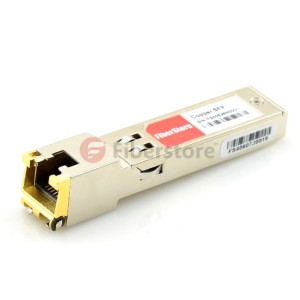
- Product Type: SFP transceiver module
- Data Rate: 1Gbps
- Wavelength: N/A
- Transfer Distance: 100m
- Connector Type: RJ45
- Cable Type: Copper
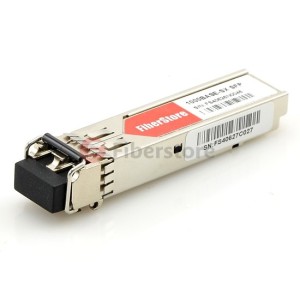
- Product Type: SFP transceiver module
- Data Rate: 1Gbps
- Wavelength: 850nm
- Transfer Distance: 550m
- Connector Type: LC Duplex
- Cable Type: Multi-Mode Fiber (MMF)
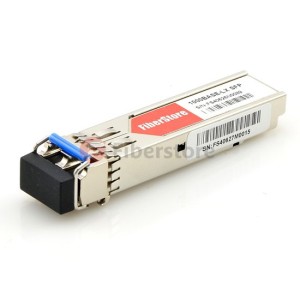
- Product Type: SFP transceiver module
- Data Rate: 1Gbps
- Wavelength: 1310nm
- Transfer Distance: 10km
- Connector Type: LC Duplex
- Cable Type: Single-Mode Fiber (SMF)
Friday, April 17, 2015
Fiber Termination Box Overview
What Is Fiber Termination Box?

Types Of Fiber Termination Box
Fiber termination box types are mainly described as Rack Mount and Wall Mount:
Rack Mount Fiber Termination Box
Wall Mount Fiber Termination Box
Fiber termination box types also include indoor and outdoor:
Indoor Fiber Termination Box
Outdoor Fiber Termination Box
The outdoor fiber terminal boxes are environmentally sealed enclosures to distribution fibers for FTTX networks. They are also designed for fiber splicing, termination, and cable management.Structure Of Fiber Termination Box
Applications Of Fiber Termination Box
Sunday, April 12, 2015
What are the differences between LX, LH and LX/LH?
We usually see LX SFP, LH SFP and LX/LH SFP on many websites, and many people show their confusion about them. Whether they are the same or different? If they are dissimilar, what differences between them on earth?
The Commonly Used 1000BASE-X Standards about Ethernet
Ethernet was the result of the research done at Xerox PARC in the early 1970s. Ethernet later evolved into a widely implemented physical and link layer protocol. Fast Ethernet increased speed from 10 to 100 megabits per second (Mbit/s). Gigabit Ethernet was the next iteration, increasing the speed to 1000 Mbit/s. The initial standard for Gigabit Ethernet was produced by the IEEE in June 1998 as IEEE 802.3z, and required optical fiber. 802.3z is commonly referred to as 1000BASE-X, which is used in industry to refer to Gigabit Ethernet transmission over fiber, where options include 1000BASE-SX, 1000BASE-LX, 1000BASE-LX10, 1000BASE-BX10 or the non-standard -EX and -ZX implementation.
Gigabit Ethernet 1000BASE-LX Optical Interface Specifications
 1000BASE-LX is a fiber optic Gigabit Ethernet standard specified in IEEE 802.3 Clause 38 which uses a long wavelength laser (1,270–1,355nm). The 1000BASE-LX SFP is specified to work over a distance of up to 5km over single mode fiber and it can also run over all common types of multi mode fiber with a maximum segment length of 550m. For link distances greater than 300m, you must install a mode-conditioning patch cord between the transceiver and the MMF cable on both ends of the link.
1000BASE-LX is a fiber optic Gigabit Ethernet standard specified in IEEE 802.3 Clause 38 which uses a long wavelength laser (1,270–1,355nm). The 1000BASE-LX SFP is specified to work over a distance of up to 5km over single mode fiber and it can also run over all common types of multi mode fiber with a maximum segment length of 550m. For link distances greater than 300m, you must install a mode-conditioning patch cord between the transceiver and the MMF cable on both ends of the link.
1000BASE-LH and 1000BASE-LX/LH Optical Interface Specifications
LH refers to Long Haul. Many vendors use both LH and LX/LH for certain SFP modules, but they aren’t a Gigabit Ethernet standard at all. 1000BASE-LX/LH SFP can achieve a distance up to 25km over single mode fiber. Unlike 1000BASE-LX/LH SFP, 1000BASE-LH SFP operates a distance up to 70km over single mode fiber.
Conclusion
In a word, the 1000BASE-LX, 1000BASE-LH and 1000BASE-LX/LH are all refer to Gigabit Ethernet transmission. Among them, the 1000BASE-LX is a standard, the 1000BASE-LH and 1000BASE-LX/LH just are terms widely used by vendors. Other long haul transmission standards include 1000BASE-LX10, 1000BASE-EX and 1000BASE-ZX. We can see their differences more clearly in the following chart:
| Name | Medium | wavelength | Specified distance |
| 1000BASE-LX/LH | 9/125 Single mode fiber | 1310nm | 10km |
| 1000BASE-LX | 62.5/125, 50/125 Multi mode fiber | 1310nm | 550m |
| 1000BASE-LX10 | 9/125 Single mode fiber | 1310nm | 10km |
| 1000BASE-LH | 9/125 Single mode fiber | 1310nm | 25~70km |
| 1000BASE-EX | 9/125 Single mode fiber | 1310nm | 40km |
| 1000BASE-ZX | 9/125 Single mode fiber | 1550nm | 70km |
Fiberstore is a professional OEM manufacturer and supplier of optical networking solutions. Fiberstore's 1000BASE-LX SFP and 1000BASE-LX/LH SFP is 100% compatible with major brands like Cisco, HP, Juniper, Nortel, D-link, Netgear and Brocade. We can see the order information clearly in the following chart:
| Brand | Models | Description |
| Fiberstore | SFP-1G31-10-xx
|
1.25Gbps 1000BASE-LX/LH SFP 1310nm 10km SMF |
| Cisco | GLC-LX-SM-RGD | Cisco GLC-LX-SM-RGD Compatible 1000BASE-LX/LH SFP 1310nm 10km IND |
| D-Link | DEM-310GT | D-Link DEM-310GT Compatible 1000BASE-LX SFP 1310nm 10km SMF |
| HP | J4859C | HP J4859C Compatible 1000BASE-LX SFP 1310nm 10km SMF |
| HP | JD119B | HP JD119B X120 Compatible 1000BASE-LX SFP 1310nm 10km SMF |
| Netgear | AGM732F | Netgear AGM732F Compatible 1000BASE-LX SFP 1310nm 10km SMF |
| Brocade | E1MG-LX-OM | Brocade E1MG-LX-OM Compatible 1000BASE-LX SFP 1310nm 10km DDM SMF |
| Brocade | E1MG-LX-OM-T | Brocade E1MG-LX-OM-T Compatible 1000BASE-LX SFP 1310nm 10km DDM IND |
| Linksys | MGBLX1 | Linksys MGBLX1 Compatible 1000BASE-LX SFP SMF |
Thursday, April 9, 2015
Wall Plates Overview
Wall plates that you see every day, in just about every room, but you think about them not very often. There is a good chance you are not aware of the sheer variety of options out there when it comes to customizing your wall plates. Everyone knows about the traditional electrical wall plate, but that's just the tip of the iceberg. There are telephone wall plates, gang wall plates, RJ45 face plate and keystone wall plates, among other A/V and data options. There are fiber optic wall plate and network face plate that are customizable in pretty much any way you can think of. This paper can give you a comprehensive understanding of wall plates.
Introduction of Wall Plates
Wall plate, or wallplate, is a highly configurable wall plate outlet products, available in both single-gang and double-gang configurations. It is designed for use within Fiber-To-The-Desk (FTTD) applications but may also be used to connect telephones and other peripherals to a network.
Wall plates protect electrical outlets and accommodate a variety of cabling solutions such as coaxial, twisted pair, fiber, and HDMI cables. Wall plates protect your network by keeping your connections safe from dust, physical damage, and foreign objects. The following figure shows us a RJ45 wall plate.
A variety of fiber and copper adapters may be loaded in the wall plate outlet in any configuration. These adapters may be purchased individually or preloaded into the wall plate outlet. The wall plate outlet is also available with angled faces that allow fiber connectors and jumpers(i.e. fiber patch cables/cords) to easily transition and exit down the wall, a 4 port wall plate (4-Port SC interface) as shown in the figure below.

According to different networks, there are mainly two types of wall plates: fiber optic network wall plates, copper network wall plates.
Fiber Optic Network Wall Plates
Fiber optic network wall plates, or fiber optic wall plates, are wall plates that designed to bring fiber to the desk and widely used in multi-floor and high building, including bevel fiber optic wall plates with 45° adapter plug-in/out angle and hybrid fiber optic wall plates/outlets. The wall plates are available with LC, SC, ST, FC adapters. They can be applied in FTTH access, telecommunication, CATV, data communication networks etc.
Copper Network Wall Plates
Copper network wall plates, or network faceplates and network outlet faceplates, are something everyone has a passing familiarity with, but few people know how many different varieties there are. In addition to your usual 1, 2, and 3 gang duplex receptacles and toggle switch covers, there are also duplex/phone combinations; face plates for VGA, Cat5e, Cat6, S-Video, RCA and BNC connector modules; and red engraved plates for emergency use.
Outlet faceplates use a double gang faceplate for standard administrative outlet locations, with connectors for all copper and fiber optic cable. Standard administrative outlets may, by specific user request, use single gang outlet faceplates in conjunction with a reducing ring. For single gang outlet boxes, use a single gang outlet faceplate with appropriate connector locations and, if required, mounting lugs for wall phones. Outlet faceplate must include two blanks position for future applications.
Reference Document: Wall Plates Tutorial
Tuesday, April 7, 2015
The Recognition of Optical Transceiver
Optical Transceiver Overview
A fiber optical transceiver is a device that can send and receive optical information. By using an optical transceiver, network spend less space and steer clear of the necessity of getting a transmitter and receiver in the network. Able to transmit information further and faster than older models, the more recent transceivers are utilized and appearance, creating more compact, smaller sized modules than ever before.
A fiber optic transceiver is a accessory acclimated to forward and accept optical information. There are a number of different components on these devices, including a light source and an electrical component. The transceiver has two ends, one that an optical cable plugs into and accession for abutting an electrical device. Fiber optic transceivers combine a fiber optic transmitter and a fiber optic receiver in a single module. They are arranged in parallel so that they can operate independently of each other. Both the receiver and the transmitter have their own circuitry and can handle transmissions in both directions. In fiber optic data links, the transmitter converts an electrical signal into an optical signal, which is coupled with a connector and transmitted through a fiber optic cable. The light from the end of the cable is coupled to a receiver, where a detector converts the light back into an electrical signal. Either a light emitting diode (LED) or a laser diode is used as the light source.
Optical transceiver generally includes both a transmitter and a receiver in a single module. The transmitter and receiver are arranged in parallel so that they can operate independently of each other. Both the receiver and the transmitter have their own circuitry so that they can handle transmissions in both directions. The transmitter takes an electrical input and converts it to an optical output from a laser diode or LED. The light from the transmitter is coupled into the fiber with a connector and is transmitted through the fiber optic cable plant. The light from the end of the fiber is coupled to a receiver where a detector converts the light into an electrical signal which is then conditioned properly for use by the receiving equipment.
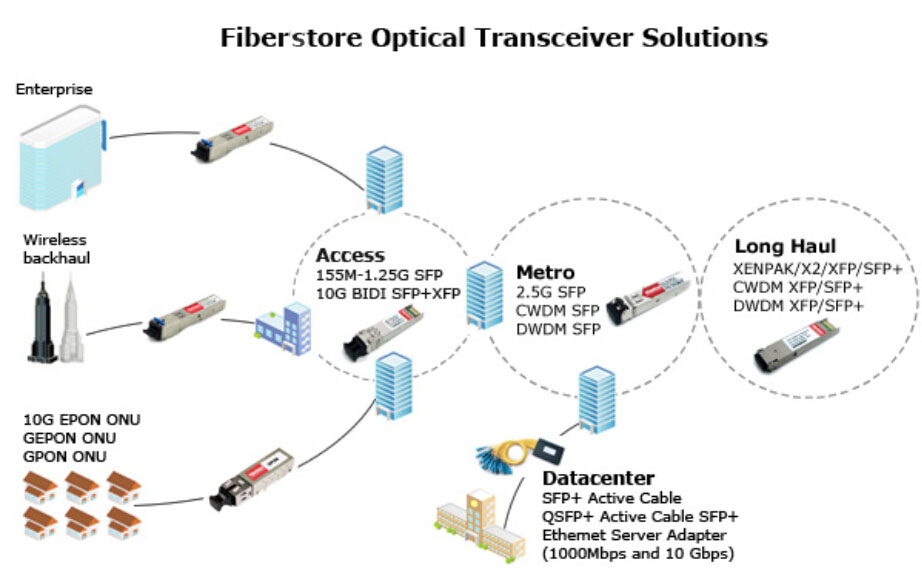
Optical transceiver, essentially just completed the converted of data between different media, can realize the connection between two switches or computers in the 0-120km distance. Its main function is to achieve the conversion between optical-electrical and electrical-optical, including optical power control, modulation transmission, signal detection, IV conversion and limiting amplifier decision regeneration. In addition, there are some functions like security information query, TX-disable. Here is a summary in the practical application.
- Optical transceivers can interconnect with switches.
- Optical transceivers can interconnect between the switch and the computer.
- Optical transceivers can interconnect with computers.
- Optical transceivers can act as the transmission repeater.
When the actual transfer distance exceeds the nominal transmission distance of the transceiver, in particular, the actual transfer distance exceeds 120km alerts, with 2 sets transceiver back to back in the case of on-site conditions allow, repeaters or the use of "optical-optical" conversiona relay, is a very cost-effective solution. - Optical transceivers can offer conversion between single-mode and multimode fiber connection.
When the networks appear to need a single multimode fiber connection, you can use a multimode transceiver and a single-mode transceiver back-to-back connections, which can solve the problem of single multimode fiber converted. - Optical transceivers can offer WDM transmission.
The lack of resources of long-distance fiber optic cable, in order to improve the utilization rate of the fiber optic cable, and reduce the cost, transceiver and wavelength division multiplexer (WDM multiplexer) with the use of two-way information on the same fiber transmission.
Optical Transceiver modules can be classified according to the following aspects.
Single-mode fiber transceiver and Multimode fiber transceiver. The single-mode version has a transmission distance of 20 to 120 km, while the multimode one's is 2 to 5 km. Due to the different transmission distance, the transceivers' transmit power, receiver sensitivity and the use of wavelength will be different.
Simplex fiber transceiver and Duplex fiber transceiver. The simplex version receives the data sent in a single fiber transmission, While the duplex one receives data transmitted on a dual fiber transmission.By definition, single fiber devices can save half of the fiber, a fiber that is in the receive and transmit data, where the fiber is very applicable to resource constraints. These products use the wavelength division multiplexing techniques, mostly using the wavelength 1310nm and 1550nm.
Transmission rate refers to the number of gigabits transmitted per second, per unit of Mbps or Gbps. Optical modules cover the following main rate: low rates, Fast, Gigabit, 1.25G, 2.5G, 4.25G, 4.9G, 6G, 8G, 10G and 40G.
SFP, SFP+, GBIC, XFP, XENPAK, X2, 1X9, SFF, 200/3000pin, XPAK, etc.
Fiberstore Optical Transceiver Solution
| Part No. | Description |
| SFP-1GT-1MA-HP | HP JD089B X120 compatible 1000BASE-T SFP Copper RJ45 100m |
| SFP-1G85-5MA-HP | HP JD118B X120 compatible 1000BASE-SX SFP 850nm 550m DDM MMF |
| SFP-1G31-10A-HP | HP JD119B X120 compatible 1000BASE-LX SFP 1310nm 10km SMF |
| SFP-1G85-5ME-HP | HP J4858B X121 compatible 1000BASE-SX SFP 850nm 550m MMF |
| SFP-1G85-5MF-HP | HP J4858C X121 compatible 1000BASE-SX SFP 850nm 550m MMF |
| SFP-1GT-1MD-HP | HP J8177C X121 compatible 1000BASE-T SFP Copper RJ45 100m |
| SFP-1G31-10F-HP | HP J4859C X121 compatible 1000BASE-LX SFP 1310nm 10km SFP SMF |
| BLSFP-1G34-10-HP | HP J9143B X122 compatible 1000BASE 1310nmTX/1490nmRX BIDI SFP 10km SMF |
Friday, April 3, 2015
Fluke 117 Electrician's Multimeter Review
The Fluke 117 is simply amazing multimeter for demanding settings like hospitals and schools and commercial buildings. The Fluke 117 multimeter includes integrated non-contact voltage detection to avoid secondary voltage detection tools for that purpose.
With its integrated non-contact voltage detection and the AutoV/LoZ function preventing false readings caused by ghost voltage, the Fluke 117 Electrician's Multimeter is the ideal multimeter for electricians. The Fluke 117 includes integrated non-contact voltage detection to help get the job done faster.

Compared to other Fluke multimeters it’s quite smaller and compact. The Fluke 117 weights about 400 grams. The Fluke 117 is ergonomically designed to give you a comfort hand holding with a compact size which provides an easy one handed operation off the device.
Fluke 117 Features- Built-in VoltAlert sensing circuit for non contact voltage detection
- AutoVolT (Auto-V) automatically determines ac/dc voltage selection
- LoZ: Low impedance input allows added measurement confidence against ghost voltage
- Large white LED backlight for excellent viewing in all working conditions
- True-rms for accurate measurements on non-linear loads
- Quality resistance, continuity, frequency and capacitance functions
- Min/Max/Average to record signal fluctuations
- CAT III 600 V safety rated
By DeusEx (United States)
The Fluke 110 series is Fluke's cheapest "Fluke Branded" line. It's a Fluke so you know you're getting an instrument worth its salt. The 117 is the most feature packed and highest priced in the series. It's a smaller form factor than some of the other Fluke meters. It features all the traditional fields that you'll find on most modern DMMs. Volts AC (True RMS) & DC both to 600V. A full mV range. Resistance, continuity, diode check, capacitence, and frequency. It features Amps AC & DC to 10A however it lacks a mV and uV range since this is an electrician's meter, not an electronics meter. Two more modes it offers are volt alert and LoZ.
By Allan York ( Gardnerville, NV USA )
I bought the Fluke 117 Multimeter as a replacement for my old and very tired Fluke 77 Multimeter. This is a great meter for the price, I love all the new features Fluke has put in. If I have any gripe it's that the leads don't stow on the back like the model 77. If you need a quality Multimeter at a decent price grab one of these.
Where to Buy Reliable Quality Network Test Equipment
To find more common used fiber optic testers from Fiberstore, include optical multimeter, visual fault locator, RJ45 tester, underground wire tracer, bit error rate tester and phone line tester. Fiberstore provide reliable quality fiber testers in accordance with telecom, military, aerospace and other industry standards.
Friday, March 20, 2015
Media Options for 10 Gigabit Ethernet
Despite strong growth in 10GbE deployments, 10GbE has yet to achieve mass market Data Center adoption, due to a number of limitations, primarily around cost, power consumption, and cabling options. The following section outlines several of these limitations in greater detail and discusses how the current generation of 10GBASE-T technologies removes them going forward.
10GBASE-CX4
10GBASE-CX4 was an early favorite for 10 GbE deployments, but its adoption was limited by bulky and expensive cables and limited reach of 15 meters. The large size of the CX4 connector, when compared to other interface options, prohibited higher switch port densities, specifically with 1RU top of rack switches and modular switch chassis. Moreover, pathways and spaces were not sufficient to handle the larger cables.
SFP+ Transceiver
 SFP+'s support for both fiber optic cables and DAC make it a more flexible solution than CX4. SFP+ connectors are smaller than CX4 connectors and offer comparable port densities to their GbE counterparts. SFP+ DAC is the leading 10GbE interface today, but its limitations in reach and cost will prevent this media from becoming the de facto cabling and interface technology for 10GbE.
SFP+'s support for both fiber optic cables and DAC make it a more flexible solution than CX4. SFP+ connectors are smaller than CX4 connectors and offer comparable port densities to their GbE counterparts. SFP+ DAC is the leading 10GbE interface today, but its limitations in reach and cost will prevent this media from becoming the de facto cabling and interface technology for 10GbE.
10GBASE-SR (SFP+ Fiber)
Cabling with Fiber is great for latency and distance (up to 300 meters). Fiber cabling coupled with optical transceivers offers the best power consumption footprint, however it is more expensive than other 10GbE media types; optical transceivers can add up to 30-40% to server, switch, and storage interface costs. The fiber electronics can be four to five times more expensive than their copper counterparts, meaning that ongoing active maintenance, typically based on original equipment purchase price, is also more expensive. This drives up both the acquisition costs as well as the ongoing annual maintenance contracts. Further, the vast majority of SFP+ connections are sold as add-in server adapters, as opposed to 10GBASE-T connections, which are now integrated on server motherboards. This add-in model adds cost and maintenance overhead.
10GBASE-SFP+ DAC
 DAC cable is a copper 10 Gigabit Ethernet cable which comes in either an active or passive Twinax (twinaxial) cable assembly and connects directly into an SFP+ housing. The active Twinax cable has active electronic components in the SFP+ housing to improve the signal quality; the passive Twinax cable is just a straight "wire" and contains no active components. The adoption rate of DAC for LAN on Motherboard (LOM) will be low, since it does not have the flexibility and reach of 10GBASE-T. With top of rack deployments, it is very difficult to use all the switch ports purchased due the generally lower number of server adapter ports and the limited reach of the cables. These unused ports carry an initial cost outlay and require power (even in idle mode) and maintenance costs, making them expensive on an ongoing basis.
DAC cable is a copper 10 Gigabit Ethernet cable which comes in either an active or passive Twinax (twinaxial) cable assembly and connects directly into an SFP+ housing. The active Twinax cable has active electronic components in the SFP+ housing to improve the signal quality; the passive Twinax cable is just a straight "wire" and contains no active components. The adoption rate of DAC for LAN on Motherboard (LOM) will be low, since it does not have the flexibility and reach of 10GBASE-T. With top of rack deployments, it is very difficult to use all the switch ports purchased due the generally lower number of server adapter ports and the limited reach of the cables. These unused ports carry an initial cost outlay and require power (even in idle mode) and maintenance costs, making them expensive on an ongoing basis.
Meida Options for 10 Gigabit Ethernet
10GBASE-SR (SFP+ Fiber)
- OEM 10GBASE-SR SFP MMF multi-mode 850nm 300m transceiver for duplex optical data communications such as 10GBASE-SR and 10GBASE-SW
- Cisco SFP-10G-SR compatible 10G SR SFP+ 850nm Transceiver Module MMF
- Finisar FTLX8571D3BCV compatible 1000BASE-SX, 10GBASE-SR and 10GBASE-SW 850nm 300m Transceiver Module MMF
- HP JD092B X130 compatible 10GBASE-SR SFP+ 850nm 300m Transceiver Module
- Brocade 10G-SFPP-SR compatible 10GBASE-SR SFP+ 850nm 300m Transceiver Module
10GBASE-SFP+ DAC
- Cisco SFP-H10GB-CU1M, Up to 10.5G, 1m AWG30, passive copper
- Cisco SFP-H10GB-CU1-5M, Up to 10.5G, 1.5m; AWG30, passive copper
- Cisco SFP-H10GB-CU2M, Up to 10.5G, 2m; AWG30, passive copper
- Cisco SFP-H10GB-CU3M, Up to 10.5G, 3m; AWG30, passive copper
- Cisco SFP-H10GB-CU5M, Up to 10.5G, 5m; AWG24, passive copper
- Cisco SFP-10G-AOC1M, SFP+ AOC, fiber, 10G, 1m
- Cisco SFP-10G-AOC3M, SFP+ AOC, fiber, 10G, 3m
Friday, March 6, 2015
Compatibility Issues of Cisco Compatible SFP module
There are some compatibility issues that I have to solved when installing a Third Party Cisco Compatible SFP modules into the switches.
Q: I am trying to work out which Third Party Cisco Compatible SFP Transceiver might work in an Aerohive switch. Maybe somebody here already tried?
 A: The answer is that most should work. Cisco normally buys their components from the more reputable brands like Agilent, and the best of my knowledge, most Cisco (if not all) SFPs should work just fine. For example, GLC-T module Cisco 1000BASE-T SFP, Cisco SFP-10G-SR, I can reach the Aerohive switch, and seems to be working well. So I suggest you not buy no-name SFPs that have no warranty, but in general any reputable brand should work fine.
A: The answer is that most should work. Cisco normally buys their components from the more reputable brands like Agilent, and the best of my knowledge, most Cisco (if not all) SFPs should work just fine. For example, GLC-T module Cisco 1000BASE-T SFP, Cisco SFP-10G-SR, I can reach the Aerohive switch, and seems to be working well. So I suggest you not buy no-name SFPs that have no warranty, but in general any reputable brand should work fine.
Q: The 10G SFPs I ordered directly from Aerohive were manufactured by source photonics, so it looks like even the ones that are Aerohive branded are still Third Party optics?
A: Because this is exactly the same with all vendors of all networking equipment. Optics are manufactured elsewhere and simply branded. The APs are not physically constructed by Aerohive ether, those are by ODM companies like Senao. This is the same ones with most vendors. Because of commoditisation of parts, the key differentiator is today in the software and the spec that the ODM is asked to work to. Most people just purchase a few of the 'supported' optics to swap in when the need arises to open a support case. Actually it seems to be a method of extortion by various vendors when mixed with as much FUD stirring as they can manage. There are certainly low quality optics out there that don't work nicely or have high failure rates, but compatibility issues are nearly always deliberately imposed.
A quick correction, Cisco and other vendors actually do design and build their APs. The fact that ODMs manufacture them does not mean that they are just buying Cisco and other vendors APs off the shelf. Most APs use reference designs for the CPU etc, but to build a reliable AP, Cisco need to own the RF side and they do. They design their own radio modules.
Another Issue about SFP module compatibility:
I just received and installed an Aerohive SR2124P switch and I have installed a 10G SFP+ SR optic into the switch, but the media and type are showing "unknown" for the optic. Is that normal for the 10G optics to show in this way? Currently I do not have an 10gig Aerohive original SFP+. I have installed a 3rd party 10G SFP+, and the optic links, and passes traffic with no issue (even though it is not an Aerohive SFP+). Since it shows "unknown" in the switch, I was just curious to see if any Aerohive Original (which I believe is a Source Photonics optic) would show up differently in the machine. I have used both Aerohive and HP modules both 1gb and 10gbe SFP+ SR with no issues, literally just attach it in. If another brand, it's possible the GBIX is at fault. Has anyone ever tried it?
More FAQs about SFP module, please visit Fiber Opitc Transceiver Solutions.
